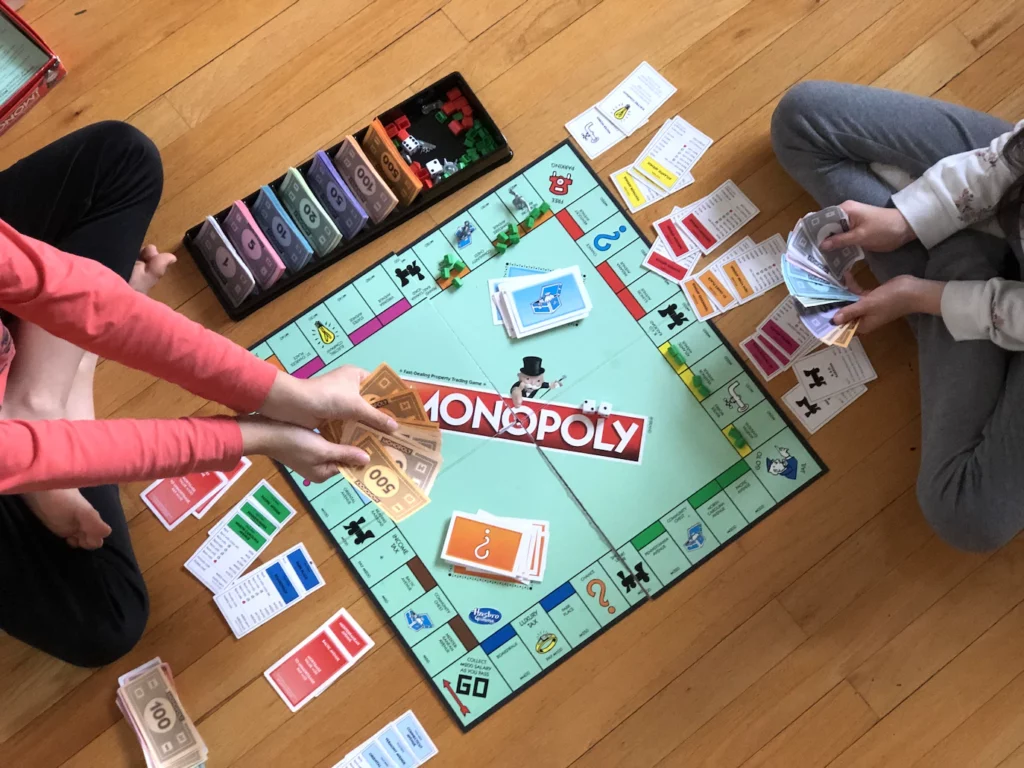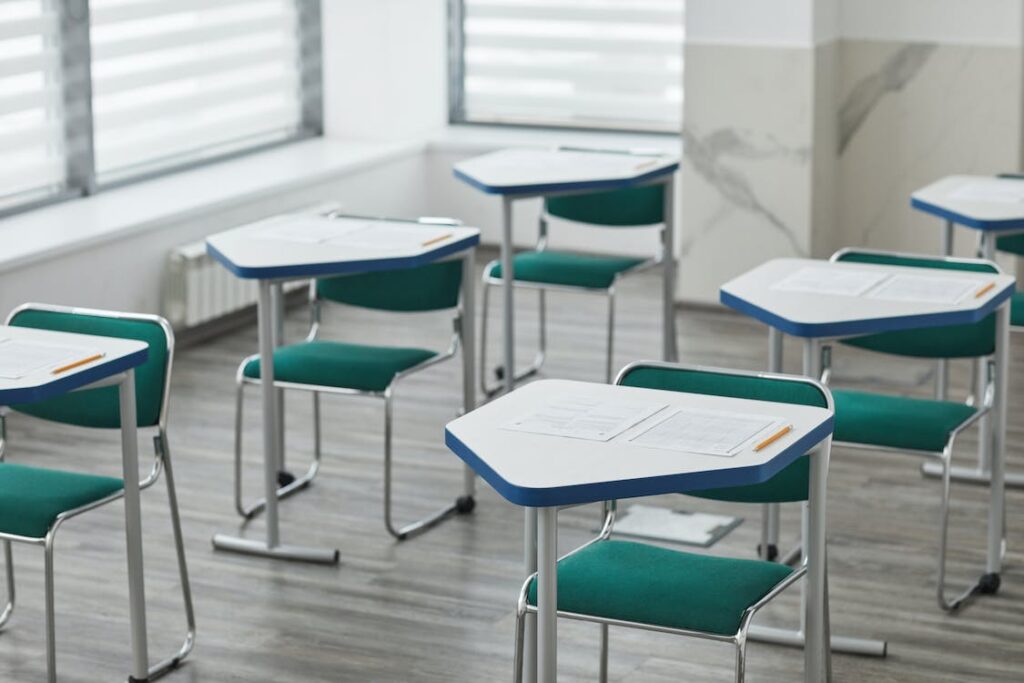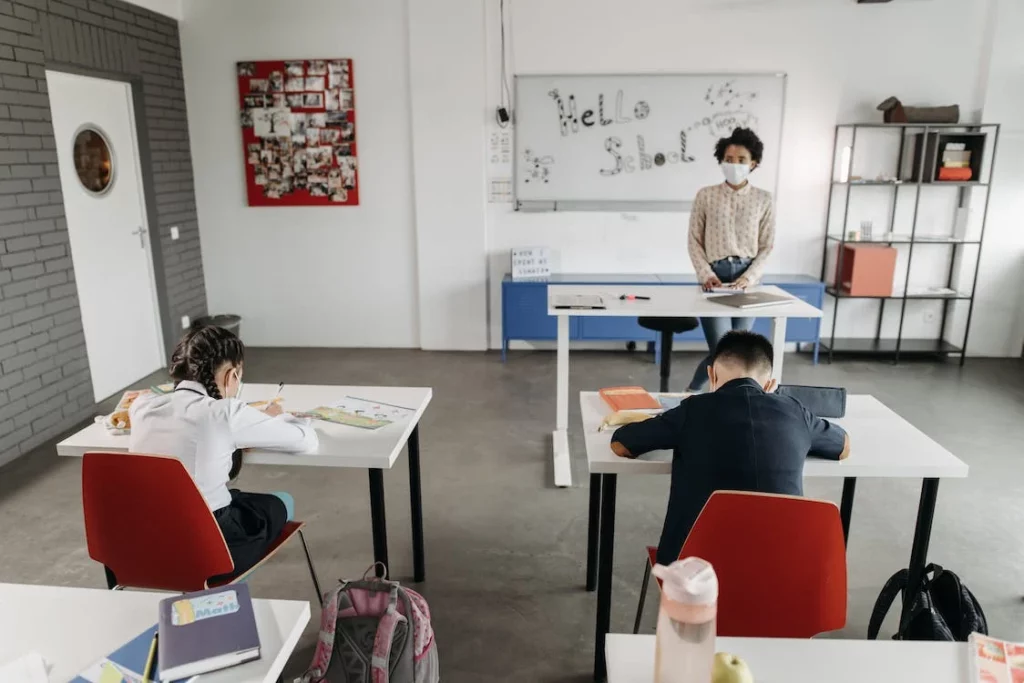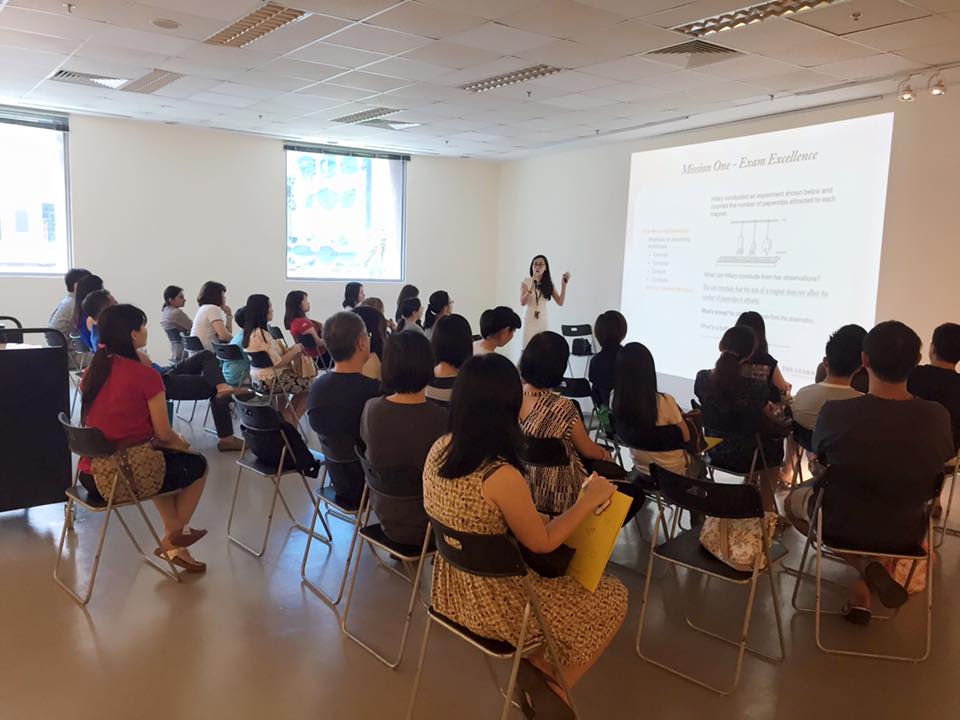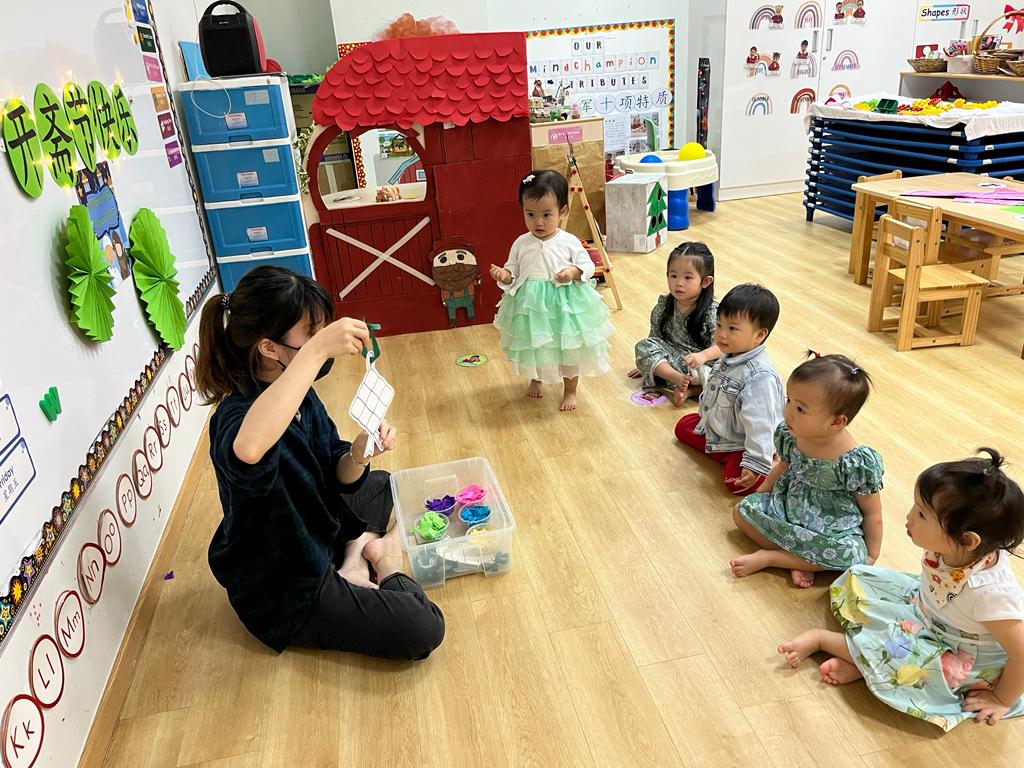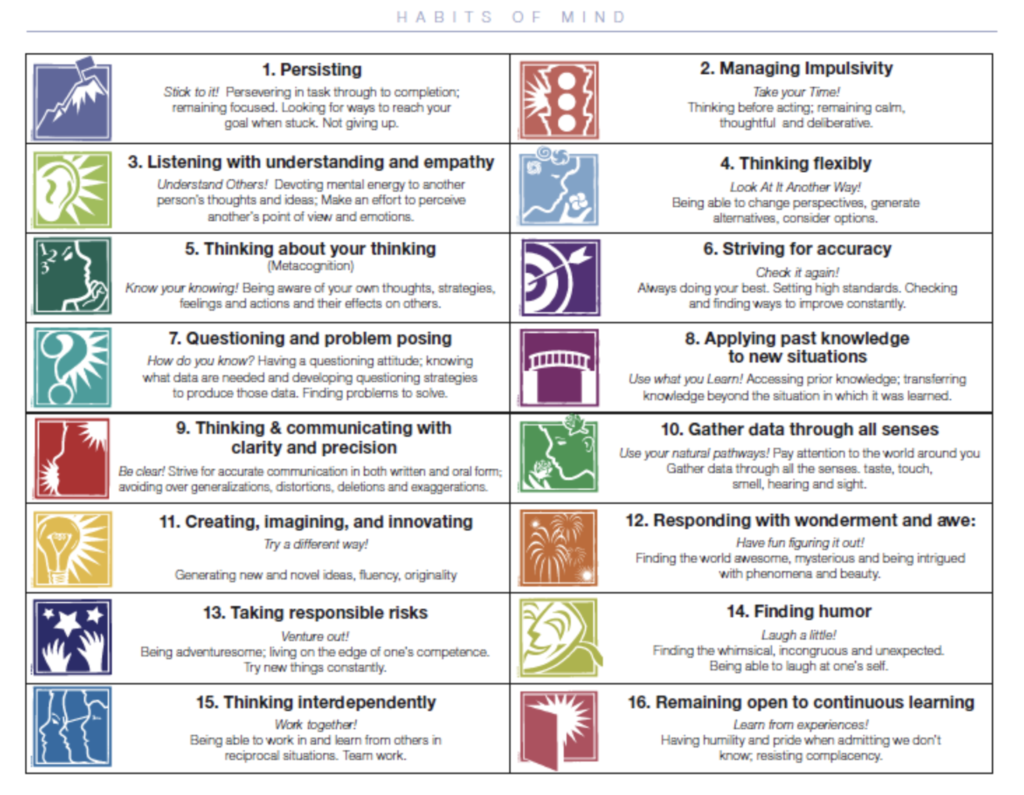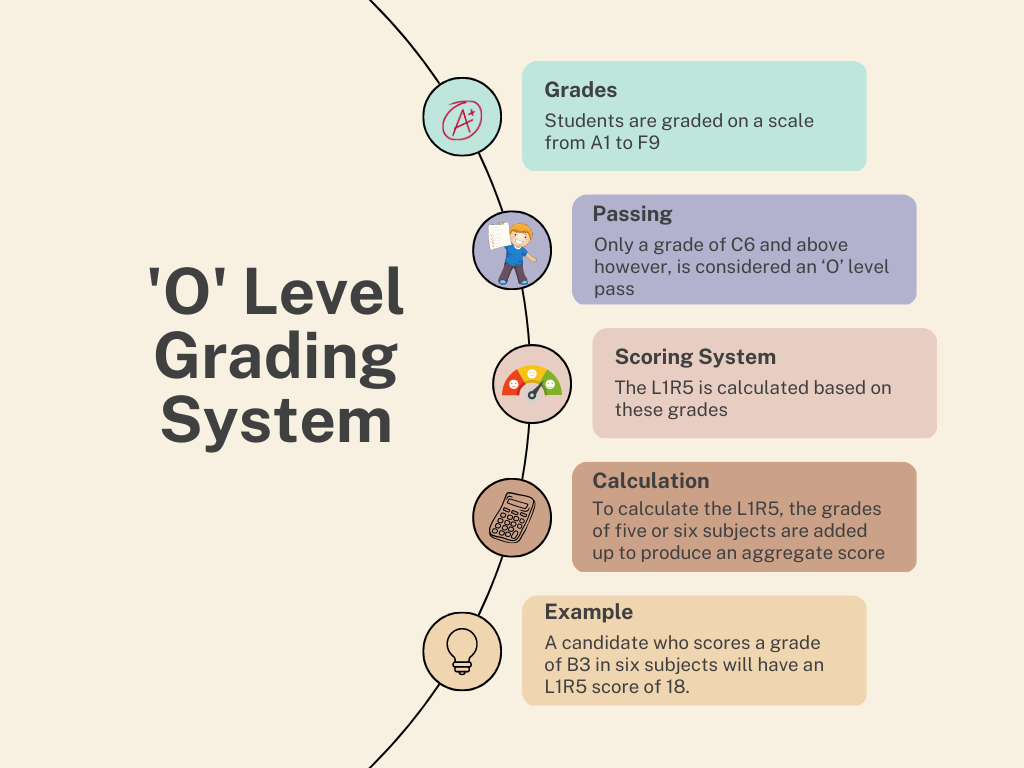"Embrace the PSLE journey with strategic planning and best practices; watch your child thrive in their final year of primary school."

Is it PSLE year already? Where has the time gone, you wonder as your child leaves the house in their primary school uniform for their final year. As we approach the PSLE (Primary School Leaving Examination) year, you might want to begin strategic planning for this critical academic challenge. Read on for some best practices and practical ideas that may significantly impact and improve your child’s PSLE preparation.
Get a Head Start

Begin your PSLE preparations early. Start practising with past year papers to see where your child stands, and in order to find out which areas of improvement to concentrate on. Early preparation not only helps your child to do well academically, but it also teaches them discipline and a routine that will come in handy during the exam period.
Adopt general study skills early in the year, in addition to subject-specific preparation. Teach your child how to manage their time effectively, take useful notes, and stay organised. Teach them not to be afraid to ask for help, and to treat learning as an ongoing process rather than a last-minute sprint. Developing these habits early on allows kids to approach education with a well-rounded attitude that lasts throughout the year and extends beyond exams.
Make a Solid Study Plan

A well-organised study plan will serve as a guide while students prepare for the PSLE. It aids in maintaining attention and accountability. Prioritise subjects where your child may need extra assistance while still allowing enough time to revise each subject. Avoid last-minute cramming in favour of a well-balanced method of regular reviewing, consistent practice, and occasional revision. This not only improves memory but also reduces tension, resulting in a more positive attitude toward learning.
Learn how to develop effective goals. To make large study goals more manageable, divide them into smaller activities. Keep track of your child’s progress and recognise little accomplishments along the road. Feeling accomplished encourages kids to continue working on their preparations. Also, ensure that your child participates in the creation of the study plan, tailoring it to their learning style and preferences. This collaborative method empowers your child to cultivate a lifetime passion for learning.
Use Breaks Wisely
Take breaks to do extensive revision across multiple courses. However, it is not only about academics; make time for relaxation and family time as well. A relaxed mind absorbs and retains material more effectively, allowing you to face the PSLE with confidence.
The Pomodoro Technique
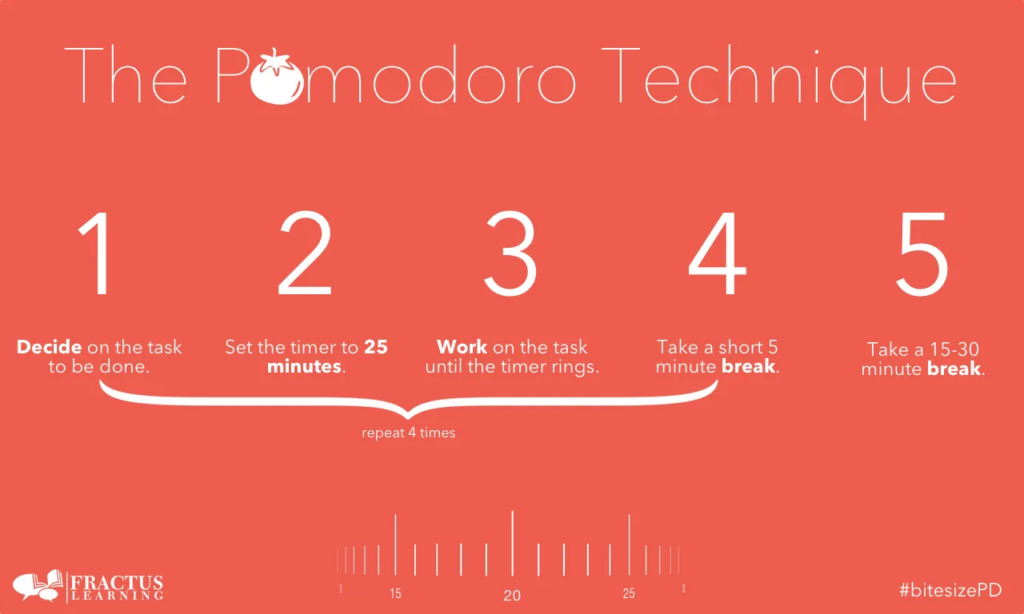
Consider incorporating the Pomodoro technique into your child’s study routine. The Pomodoro approach divides your child’s study time into small, focused chunks of 25 minutes each, followed by a 5-minute rest. This systematic technique can improve focus and productivity while reducing burnout and enhancing their study experience. Experiment with various durations to see what works best for your child, and remember to use the breaks to stretch or refresh their mind.
Eat That Frog
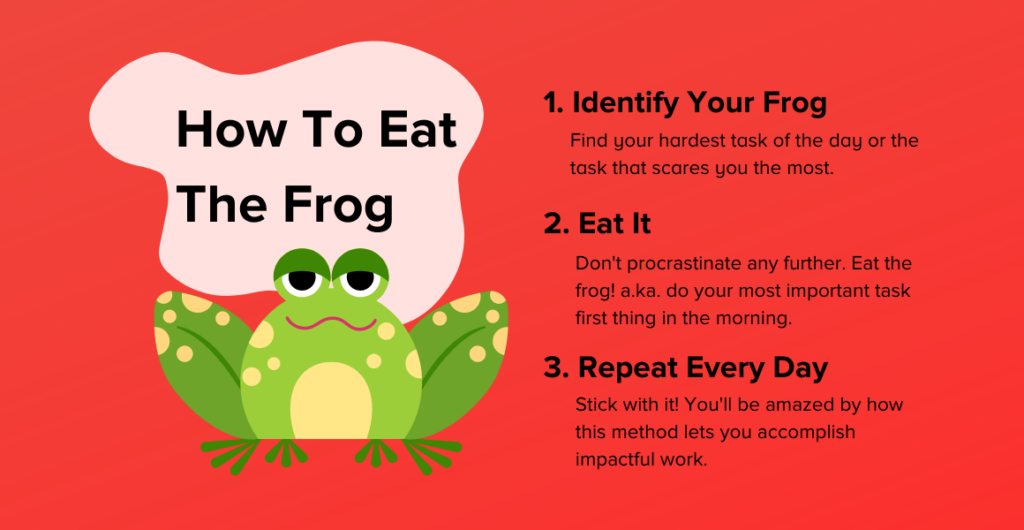
The ‘Eat That Frog’ technique can be effective as well, especially when it comes to prioritising and conquering challenging tasks early in the day. This method encourages tackling the most challenging and important tasks first thing. By addressing their most difficult subjects or assignments first, it will set a positive tone for the remainder of the day and help kids to avoid procrastinating.
Embrace Visual Aids

When studying for the PSLE, visual aids are your best friend. Work with your child to create mind maps, graphs, and charts for each subject to help retain complicated knowledge. Making visual representations actively engages the mind in the learning process, allowing students to gain a better comprehension of the content. You can also employ technology, such as apps, to generate interactive visualisations to spice up your child’s study routine. Check out ‘5 Ways to Take Better Notes in Class’. Variety keeps kids engaged and aids in the retention of information. Practice Exam Conditions
Practising test settings is critical for PSLE preparation. To imitate the actual exam setting, schedule timed practice sessions for each subject. This allows kids to become acquainted with the pressure and time limits, boosting their confidence in their talents. During these practice runs, kids will learn to manage their time wisely and devise a strategy for each component of the exam. After each practice, get your child to reflect by considering their performance, finding areas for development, and recognizing their talents. Each practice session becomes a useful learning experience as a result of this reflecting process, sharpening their techniques and increasing their readiness for the actual exam day.
Think Positive

Be aware of the psychological part of PSLE preparation. Spend some time practising positive visualisation. Remind your child of their triumphs on mock exams—what tactics worked well, and how can they apply these skills in the real exams? You can raise their confidence and lessen exam anxiety by getting them to recall their earlier accomplishments. Extend this activity to include picturing the full exam day. Envision a calm and concentrated mindset, good problem-solving, and the joy of confidently completing each segment. Positive imagery cultivates resilience and a proactive approach to adversity.
Balance is Key

While scoring well on tests is vital, maintaining a healthy lifestyle is also essential. Remember to get your child to participate in physical activities and hobbies outside of class. A five-hour study session may appear productive, but a balanced lifestyle will keep them rejuvenated, energised, and better able to concentrate when they hit the books.. Get your kids to collaborate in the creation of their schedules, giving them the ability to control their time and activities. Balancing academics and recreational activities improves study efficiency and mental health. Remember that a healthy mind in a healthy body is the cornerstone for long-term success.
Effective preparation for the PSLE demands a proactive and well-rounded approach. By integrating these elements into the PSLE preparation journey, you can navigate the challenges with confidence and optimise your performance.





















